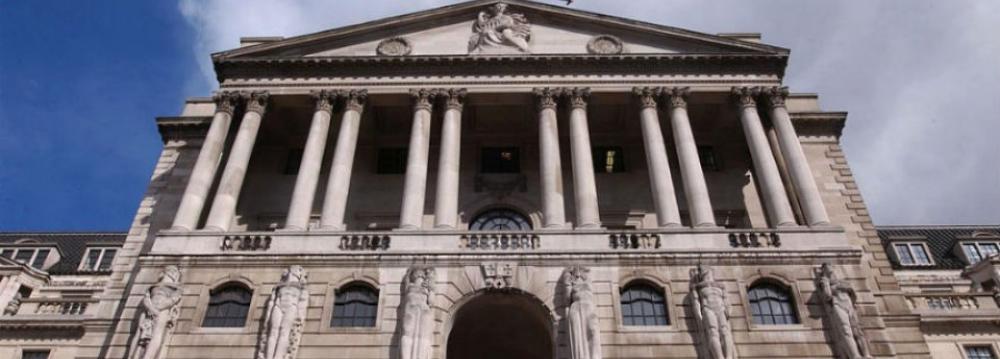If there’s a golden rule for central bankers in the 21st century, this is it: Seek clarity and avoid uncertainty. A central bank’s target should be clear. The data it uses should be known. The analysis it conducts on that data should be comprehensible. And, certainly, politics should have nothing to do with its decisions.
Yet across the world, central bankers are struggling to live up to these requirements. Instead they’re undercutting their own positions by introducing quite unnecessary confusion into policymaking, columnist Mihir Sharma wrote for Bloomberg.
Most obviously, the US Federal Reserve continues to keep markets across the world on tenterhooks for little good reason.
Several hawkish members of the Federal Open Market Committee have said recently that the ingredients are in place for a long-expected increase in interest rates. Yet the bond market reflects general disbelief that the Fed could possibly raise rates less than a week before a presidential election. (The FOMC meets next on Nov. 1-2.)
That’s unfortunate, since the data that the Fed is supposedly monitoring—jobs growth, personal consumption expenditure, inflation and so on—suggest that the US central bank should already have raised rates.
If instead it waits till December to do so, it will have kept financial markets unstable and expectant for months with no clear explanation as to why.
Negative Rates
Imagine a bank that pays negative interest. In this upside-down world, borrowers get paid and savers penalized. Crazy as it sounds, several of Europe’s central banks cut key interest rates below zero in 2014, and now Japan has followed.
By mid-2016, some 500 million people in a quarter of the world economy were living with rates in the red. Unthinkable before the 2008 financial crisis, the idea is to jolt lending, spur inflation and reinvigorate the economy after other options have been exhausted.
It’s an unorthodox move that has distorted financial markets and triggered complaints that the strategy is backfiring. Negative rates will either mark the start of a new era for the world’s central banks, or finally expose the limit of their powers.
Markets Hanging in Balance
Other central banks have had their own issues. In September, the Bank of Japan switched its policy target to long-term interest rates from the rate of increase of the monetary base, continuing its role as junior partner in Prime Minister Shinzo Abe’s attempt to jolt Japan’s sluggish economy out of decades-long stagnation.
Governor Haruhiko Kuroda insisted that this did not represent a “tapering” of stimulus; investors strained to believe him.
The BoJ has left murky how it will respond when economic indicators evolve: Sure, the bank has a zero target for the yield on Japan’s 10-year bond, but how will that be achieved? Kuroda’s vagueness has left markets hanging.
Earlier this week, the Reserve Bank of India caused similar confusion. Under Raghuram Rajan, the RBI’s previous governor, investors had become accustomed to the idea that the bank was targeting 4% inflation by March 2018. Rajan’s deputy, Urjit Patel, fully backed that target.
But after taking over the RBI, Patel startled markets by refusing to restate it in his first post-Rajan policy decision on Tuesday, an effective U-turn on policy without any real explanation.
The RBI also suggested that the “real” return for savers it considered desirable—the inflation-adjusted rate—should be 1.25%. Rajan had earlier said that a rate of 1.5 to 2% would be reasonable. Again, the bank provided no real explanation of the change or what it means.
As a result, the RBI’s decision to cut interest rates by 25 basis points surprised many investors. The bank argued that India’s consumer price inflation had shrunk permanently, ending the long post-crisis period in which controlling runaway prices had become the RBI’s obsession.
True, a good monsoon may keep food prices moderate. But lower crude oil prices may have had as big an influence on Indian consumer price inflation as the rains, if not bigger: Inflation has fallen below 6%, into the RBI’s comfort zone, largely thanks to the sustained decline in global crude prices since June 2014.
It’s hard not to worry that India’s new monetary policy committee, like its peers elsewhere, is focused on assisting the government’s political objective of reviving private investment, even at the cost of clear communication of the RBI’s own objectives.
That fear is supported by Patel’s suggestion that the central bank—which also regulates India’s banking sector—would henceforth be more “pragmatic” in dealing with the asset quality crisis in India’s banks than it had been under Rajan, whose take-no-prisoners approach to the problem had upset some in the ruling party.
Partners to Government
Since the global financial crisis, central bankers have become accustomed to acting as partners to government. Exceptional times may have required unusual measures. Yet the time has now come for them to explain clearly how and when they will exit measures that have proved ineffective or which are no longer necessary, and return to “normality”.
Until they do—and as long as investors are unclear about what “normality” means for central banks and how they intend to get there—markets will stay unsettled. When the exit comes, that means the adjustments will be far from smooth. Surely central bankers should be preparing markets for that, not sending mixed messages.


